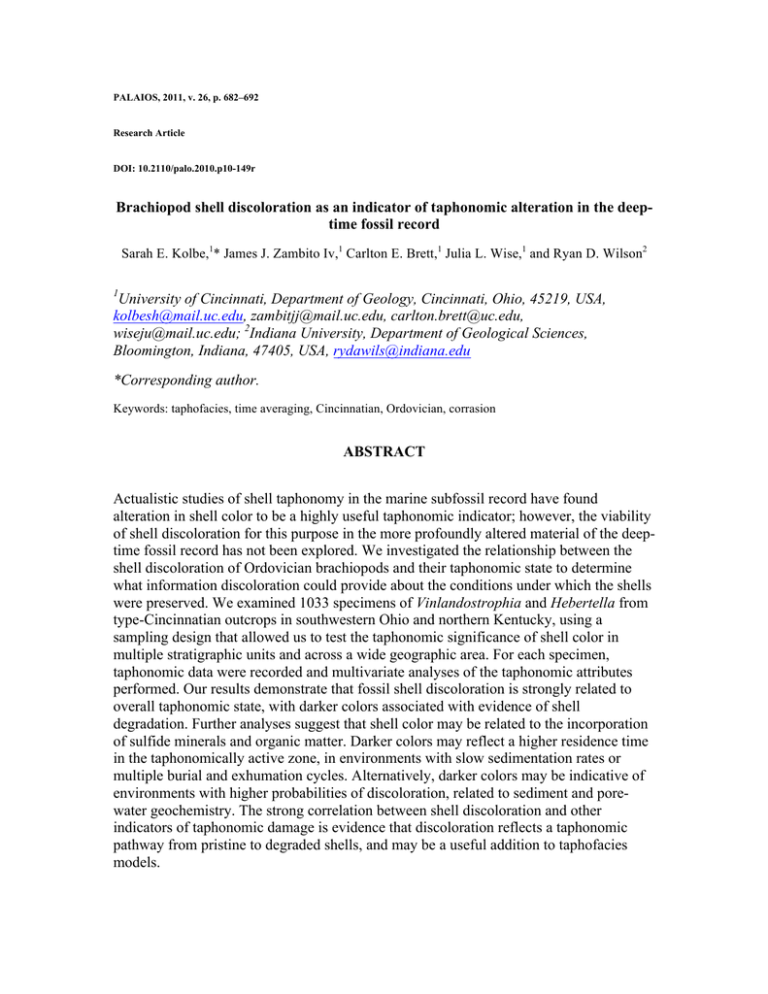Brachiopod shell discoloration as an indicator of taphonomic
advertisement

PALAIOS, 2011, v. 26, p. 682–692 Research Article DOI: 10.2110/palo.2010.p10-149r Brachiopod shell discoloration as an indicator of taphonomic alteration in the deeptime fossil record Sarah E. Kolbe,1* James J. Zambito Iv,1 Carlton E. Brett,1 Julia L. Wise,1 and Ryan D. Wilson2 1 University of Cincinnati, Department of Geology, Cincinnati, Ohio, 45219, USA, kolbesh@mail.uc.edu, zambitjj@mail.uc.edu, carlton.brett@uc.edu, wiseju@mail.uc.edu; 2Indiana University, Department of Geological Sciences, Bloomington, Indiana, 47405, USA, rydawils@indiana.edu *Corresponding author. Keywords: taphofacies, time averaging, Cincinnatian, Ordovician, corrasion ABSTRACT Actualistic studies of shell taphonomy in the marine subfossil record have found alteration in shell color to be a highly useful taphonomic indicator; however, the viability of shell discoloration for this purpose in the more profoundly altered material of the deeptime fossil record has not been explored. We investigated the relationship between the shell discoloration of Ordovician brachiopods and their taphonomic state to determine what information discoloration could provide about the conditions under which the shells were preserved. We examined 1033 specimens of Vinlandostrophia and Hebertella from type-Cincinnatian outcrops in southwestern Ohio and northern Kentucky, using a sampling design that allowed us to test the taphonomic significance of shell color in multiple stratigraphic units and across a wide geographic area. For each specimen, taphonomic data were recorded and multivariate analyses of the taphonomic attributes performed. Our results demonstrate that fossil shell discoloration is strongly related to overall taphonomic state, with darker colors associated with evidence of shell degradation. Further analyses suggest that shell color may be related to the incorporation of sulfide minerals and organic matter. Darker colors may reflect a higher residence time in the taphonomically active zone, in environments with slow sedimentation rates or multiple burial and exhumation cycles. Alternatively, darker colors may be indicative of environments with higher probabilities of discoloration, related to sediment and porewater geochemistry. The strong correlation between shell discoloration and other indicators of taphonomic damage is evidence that discoloration reflects a taphonomic pathway from pristine to degraded shells, and may be a useful addition to taphofacies models.


